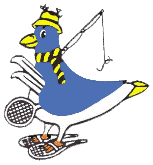
Defibrillator
Our park’s defibrillator location is video monitored. It is unlawful to tamper with an Automated External Defibrillator (AED) device other than for the use in emergency circumstances. Tampering outside an emergency will result in a minimum $2500 fine, plus the cost of repairs.
How to Use an AED
These AED steps should be used when caring for a non-breathing child aged 8 or older who weighs more than 55 pounds, or an adult.
After checking the scene and ensuring that the person needs help, you should ask a bystander to call 911 for help, then:
1. Complete the CHECK and CALL steps
2. As soon as an AED is available, turn it on and follow the voice prompts
3. Remove clothing and attach pads correctly
Remove all clothing covering the chest. If necessary, wipe the chest dry
Place one pad on the upper right side of the chest
Place the other pad on the lower left side of the chest, a few inches below the left armpit
Note: If the pads may touch, place one pad in the middle of the chest and the other pad on the back, between the shoulder blades
4. Plug the pad connector cable into the AED, if necessary
5. Prepare to let the AED analyze the heart’s rhythm
Make sure no one is touching the person
Say, “CLEAR!” in a loud, commanding voice
6. Deliver a shock, if the AED determines one is needed
Make sure no one is touching the person
Say, “CLEAR!” in a loud, commanding voice
Push the “shock” button to deliver the shock
7. After the AED delivers the shock, or if no shock is advised, immediately start CPR, beginning with compressions.
Be prepared for moments that matter by taking an AED class and you could help save a life.
For more information about defibrillation, go to the HeartSafe.ca website.


